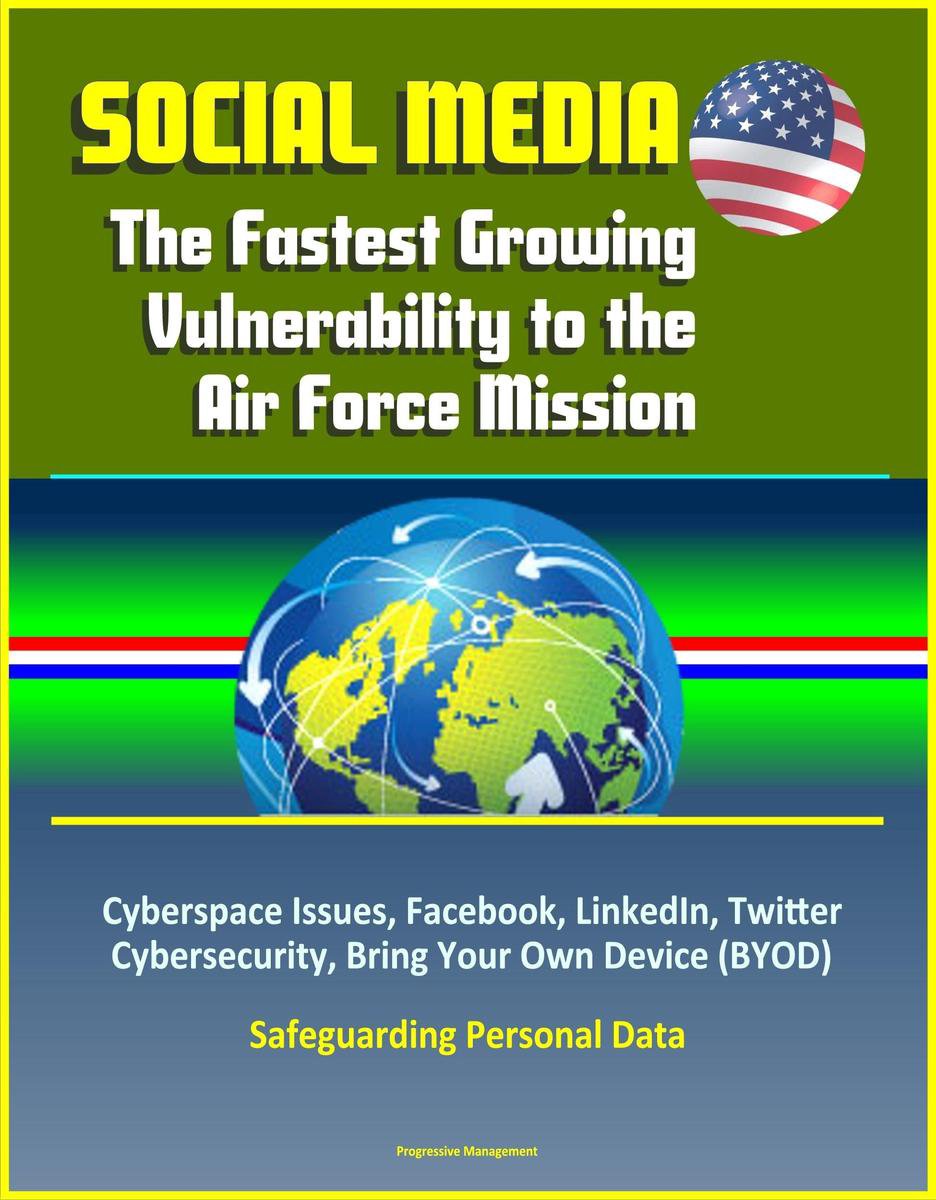Social Media: The Fastest Growing Vulnerability to the Air Force Mission - Cyberspace Issues, Facebook, LinkedIn, Twitter, Cybersecurity, Bring Your Own Device (BYOD), Safeguarding Personal Data
This excellent report has been professionally converted for accurate flowing-text e-book format reproduction. Social media is the fastest growing vulnerability to the military mission and the personal security of all Airmen. On 30 November 2014, the FBI issued warning to members of the US military and requested that they review their social media presence for any information like names and addresses that might attract the attention of violent ISIS extremists. Over the past decade, the convergence of mobile broadband devices has enabled social media to become more and more integrated into our everyday lives. The inherent risks and vulnerabilities of the internet and social networking sites like Facebook, LinkedIn, and Twitter along with the Air Force's endorsement to actively use social media, has cultivated a rich and ripe environment for foreign adversaries and criminals to cherry-pick personal information about Airmen and their missions for nefarious activities. To help Americans understand the risks that come with being online, the Department of Homeland Security launched a new cybersecurity awareness campaign: Stop, Think, and Connect. To educate Airmen on social media, AF public affairs created the "Air Force Social Media Guide" in 2013 to encourage Airmen to share their AF experiences with family and friends in the social media environment. However, this is counter to the FBI's guidance that promotes the reduction of users' on-line footprint and online presence in cyberspace. Public Affairs published the "Air Force Social Media Guide" in 2013 to encourage Airmen to share their Air Force experiences with family and friends in the social media environment with the following introduction: "This guide will help you share information effectively while following Air Force instructions and protecting operations security." The guide does an excellent job identifying the "shoulds" and "should nots" in social media; however, the guide does not address hardware vulnerabilities or the risks of using social media sites. This paper will respond to some of the most common threats and vulnerabilities of the social media environment, the risks of using social media, and the current Air Force social media guidance. It will also provide recommendations to educate better and inform Airmen and their families on using social media sites and cyberspace best practices. Today's cyberspace environment provides an engaging interactive experience for social networking, picture and video sharing, and blogs that keep end users engaged and wanting to share or consume more information. In addition to social media sites, commercial web services, online commerce services, and the hardware used for networking can provide the means to compromise sensitive information. Threats to desktop computer hardware are important but fall outside the scope of this paper; an example is in the notes. Today's hackers have discovered exquisite ways to install malware on a user's computer hardware through seemingly innocuous means by exploiting security breaches in social media websites that use Java, Ajax, or other popular software technologies. Opening up files or hyperlinks attached to social media messages or email attachments may contain malware that can bypass firewalls or virus protection programs. In many cases, this happens without the user knowing they have become a victim or that their hardware is infected.
- Ean/ISBN: 9781370578993
- Review:
